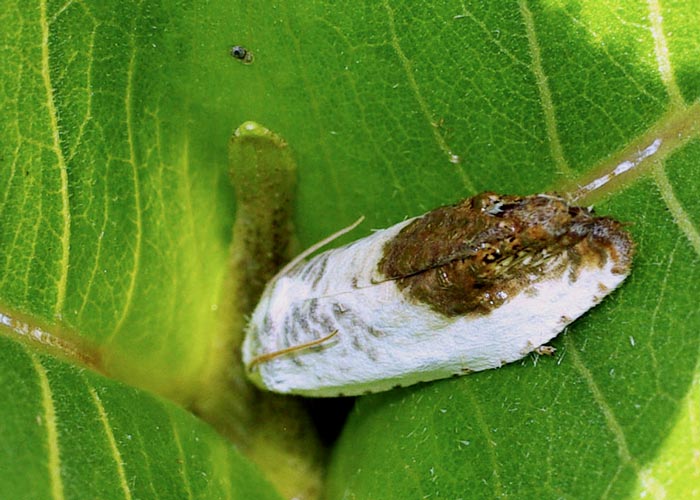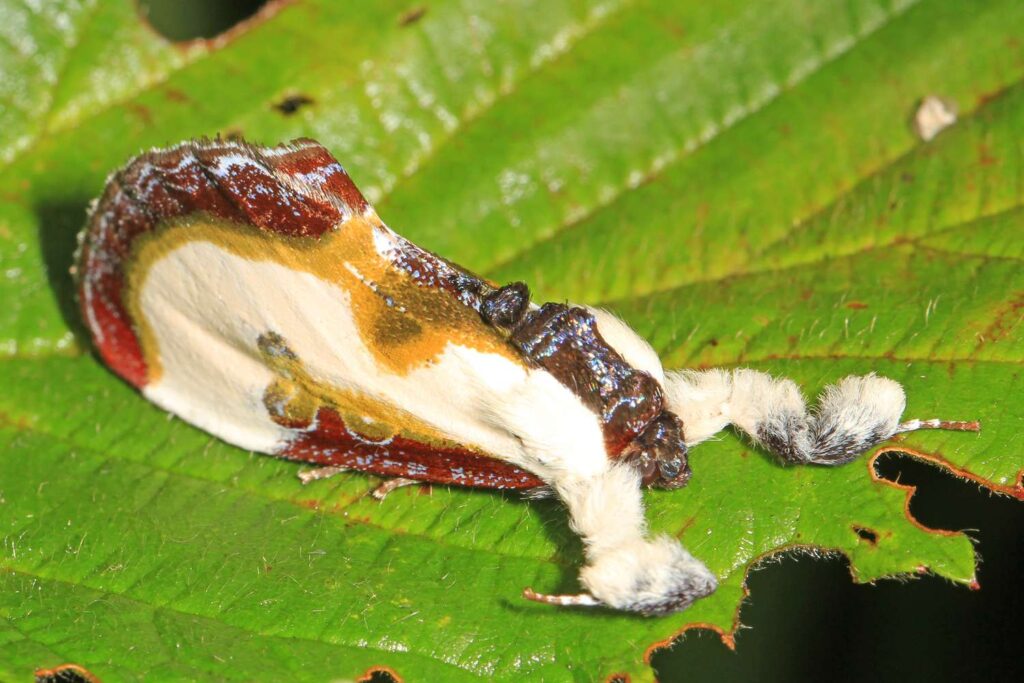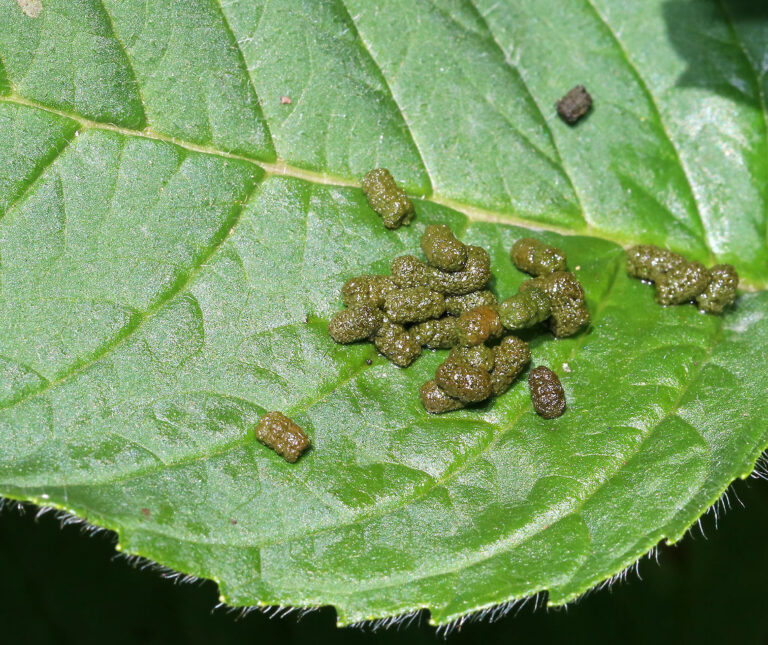Moth poop, also known as frass, is typically small, dry, and granular in texture. It can be brown to black in color and may resemble tiny grains or pellets. However, the appearance can vary depending on the moth species and diet.
However, if you’re dealing with a moth infestation, focus on addressing the infestation rather than the appearance of their droppings.
How does moth poop look and feel?
Understanding these characteristics of moth poop can be valuable for pest control professionals and homeowners in identifying the presence of moths in their living spaces and taking appropriate measures to address potential infestations.
Size and Texture
Small and Granular: Moth poop, or frass, is typically quite small, usually no larger than a grain of rice. It appears as tiny pellets or granules.
The small size is due to the relatively small size of moths and their limited digestive capacity.
Dry Consistency: Moth frass tends to be dry in consistency. This is because moths, like many insects, have a specialized digestive system that efficiently extracts nutrients from their food, leaving behind dry waste.
Furthermore, the dryness can be helpful for homeowners in identifying and cleaning up moth infestations, as it’s less likely to stain surfaces or create a mess compared to wetter types of excrement.
Color Variations

Brown to Black: Moth poop typically falls within the color range of brown to black. The specific color can depend on the moth species, its diet, and its life stage.
The coloration arises from the presence of pigments and metabolic byproducts in the frass.
Potential for Lighter or Darker Shades: While brown to black is the general color range, there can be variations within this spectrum. Some moth species may produce frass that is lighter brown or almost black.
In addition, the variation in shade can sometimes be related to the types of plant material or other food sources that moths consume.
Variability Among Moth Species
Influence of Species-Specific Diet: Moth species often have distinct dietary preferences. For example, some moths primarily feed on leaves, while others feed on stored grains or textiles.
Moreover, the specific diet of a moth can influence the composition and appearance of its frass. For instance, frass from a textile-eating moth may look different from that of a leaf-eating moth.
Differentiating Features: Various moth species may have subtle differences in the appearance of their frass, which experts can use for identification purposes.
Additionally, these differences can include the size of the pellets, the texture, and even the presence of tiny undigested remnants of their food.
What sets moth frass apart from other pest droppings?
By understanding these distinctions and common characteristics, individuals can more effectively identify and differentiate moth frass from other pest droppings, aiding in the early detection and management of moth infestations.
Distinguishing from Other Pest Droppings
Contrasting with Rodent or Insect Droppings: Moth frass can be distinguished from rodent or insect droppings through several key differences.
Rodent droppings are typically larger and more oval-shaped, whereas moth frass is much smaller and granular.
Moth frass is dry and crumbly, whereas rodent droppings are often moist and have a more solid texture.
Insect droppings, such as those from cockroaches or beetles, may be similar in size to moth frass, but they often have a different appearance. For example, cockroach droppings may resemble small, dark specks, while moth frass tends to be more granular.
Observing the location where the droppings are found can also provide clues. Moth frass is often found near the source of infestation, such as stored clothing or pantry items, while rodent droppings may be scattered around feeding areas.
Unique Traits of Moth Frass: Moth frass has distinctive traits that set it apart from other types of pest droppings. It is typically small and granular, resembling tiny pellets or grains.
Furthermore, the color of moth frass falls within the brown to black spectrum, and it may have variations based on the moth species and diet.
Moth frass is dry and crumbly, making it less likely to smear or leave wet stains on surfaces.
Unlike some insect droppings, moth frass doesn’t have a strong odor.
Recognizing Common Characteristics
Visual Inspection: Visual inspection is a primary method for identifying moth frass. It involves closely examining the suspected droppings to determine their size, color, and texture.
When identifying moth frass, look for small, dry, granular pellets or grains that are brown to black in color.
Moth frass may also appear clustered in areas near the infestation source, such as clothing closets or food storage areas.
Consistency and Location: The dry and crumbly consistency of moth frass sets it apart from many other types of pest droppings, which tend to be wetter or stickier.
In addition, consider the location where the droppings are found. Moth frass is often located near the site of infestation, such as in stored food containers or on clothing in closets.
Inspect areas where moths are known to be active, including pantries, wardrobes, and kitchen cabinets.
What are the implications of finding moth poop?

It is crucial to address moth infestations promptly through pest control measures and to take preventive steps to minimize the risk of future infestations.
Implications of Finding Moth Poop
Structural Damage: Moths, especially species like clothes moths and pantry moths, can cause structural damage to homes and stored items. Clothes moths, for instance, feed on natural fibers like wool and silk, leading to holes and damage in clothing, rugs, and upholstery.
Pantry moths can infest and contaminate stored food items, making them inedible and leading to potential food waste.
Financial Costs: Moth infestations can result in financial burdens due to the need to replace damaged clothing, furnishings, or food items.
Moreover, professional pest control services may also be required to eliminate the infestation, incurring additional costs.
Emotional Stress: Discovering moth infestations and damage to personal belongings can be emotionally distressing for homeowners.
The loss of sentimental or valuable items can add to the stress and emotional toll of dealing with an infestation.
Health and Hygiene Considerations
Allergies and Respiratory Issues: While moth droppings themselves are not known to be highly allergenic, the presence of moth infestations can exacerbate allergies or respiratory issues in some individuals. This is particularly true if individuals are allergic to the proteins found in moth larvae or their shed skins.
Moth larvae and their shed skins may become airborne when disturbed, potentially triggering allergic reactions in sensitive individuals.
Contamination of Food:
Pantry moths, in particular, are known for contaminating stored food products. Their presence can lead to the spoilage of food items, which can pose health risks if consumed unknowingly.
Consuming food contaminated by moth larvae or their droppings can lead to gastrointestinal issues.
Hygiene and Cleanliness: Moth infestations can compromise the overall cleanliness and hygiene of a living space. Accumulation of frass and shed skins can lead to unsightly conditions.
Maintaining good hygiene practices, such as regular cleaning and proper food storage, is essential to prevent and manage moth infestations.
Secondary Pest Attraction: Moth infestations can attract other pests, such as carpet beetles or cockroaches, which may exacerbate the pest problem and pose additional health and hygiene concerns.
FAQ’s
Do moths poop liquid?
Yes, moths excrete liquid waste known as frass, which can vary in consistency depending on their diet and species.
Is moth poop red?
Moth poop, or frass, is typically not red. It usually appears as dark-colored or brownish pellets.
Do clothes moths leave droppings?
Yes, clothes moths can leave droppings, which are small, dark-colored pellets. These droppings may be found near their feeding and nesting areas.
What liquid comes from moths?
Moths excrete a liquid waste called frass, which consists of undigested food particles and waste materials.
How do you clean moth poop?
To clean moth poop, gently scrape off any dry residue and then blot the area with a mild soapy solution and water. Rinse and dry the affected area thoroughly.
Do adult moths poop?
Yes, adult moths also excrete frass, but the frequency and quantity may vary depending on their activity and diet.
What kills moths?
Moths can be killed or deterred by various methods, including using moth repellents, keeping clothing and storage areas clean, and using traps or professional pest control if infestations occur.
How often do moths poop?
The frequency of moth excretion, or frass production, can vary, but it generally occurs as they feed and digest their food. The exact frequency can depend on factors like diet and activity level.
Final Word’s
In conclusion, knowing what moth poop looks like is important for homeowners and pest control experts. Moth poop is usually small, dry, and grainy. It can be brown or black, but this may vary depending on the kind of moth and what they eat.
Being able to tell moth poop apart from other pest droppings, like those from rodents or insects, is crucial for spotting a problem early. Looking closely and thinking about where you find it are key to figuring out what it is.
Finding moth poop isn’t just about appearances. It can lead to damage in your clothes, furniture, and stored items, which can be expensive and upsetting. It might also make allergies or breathing issues worse for some people. Plus, if moths get into your food, it can make you sick.
So, it’s important to deal with moth infestations quickly using pest control methods and to keep things clean and stored properly to stop them from coming back. Understanding what moth poop means helps protect your home, things, and health from these unwanted pests.

